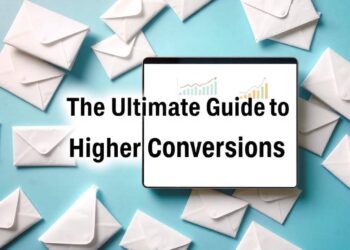In the fast-paced world of digital marketing, staying connected with potential customers is essential. A proven way to engage your audience without overwhelming them is through a drip campaign. Drip campaigns allow you to stay top-of-mind, nurturing leads by delivering the right content at the right time. Here’s an in-depth look at creating effective drip campaigns that drive conversions, engage leads, and maximize the value of your marketing efforts.
What is a Drip Campaign?
A drip campaign is an automated series of emails sent on a schedule or triggered by user behavior to guide leads through the buyer’s journey. Unlike one-off email blasts, drip campaigns are tailored to fit individual prospects’ interactions, which helps build a connection over time. Each “drip” provides value or answers questions, slowly leading leads closer to making a purchasing decision.
Why Drip Campaigns Are Essential for Lead Nurturing
Drip campaigns do more than fill an inbox; they create a framework for developing relationships. Here’s why they’re critical:
- Keeps Leads Engaged: Drip campaigns keep you in front of leads without being intrusive. By gradually sending relevant content, you’re building trust and awareness at a comfortable pace for the lead.
- Increases Conversion Rates: Nurtured leads are more likely to convert. A well-executed drip campaign addresses pain points and offers solutions, turning prospects into buyers.
- Segmented Messaging: Drip campaigns allow you to tailor messages for different customer groups, creating more personalized experiences.
- Saves Time and Resources: Automated drip campaigns reduce the need for constant manual input, allowing your marketing team to focus on strategy rather than repetitive tasks.
Step-by-Step Guide to Creating an Effective Drip Campaign
Creating an effective drip campaign requires strategic planning and the right tools. Here’s a step-by-step guide to crafting a campaign that resonates and drives results:
Step 1: Define Your Goals
To build a successful drip campaign, clarify your objectives. Are you looking to increase brand awareness, generate more sales, or promote a new product? Clear goals will help you structure your campaign and measure success.
- Example Goal: Increase lead-to-customer conversion rate by 20% over the next quarter.
Step 2: Know Your Audience
The success of your campaign hinges on your understanding of your audience. Use demographic information, behavioral data, and previous interactions to create profiles of your ideal customers.
- Create Buyer Personas: Segment your audience into categories like age, interests, pain points, and preferences to design tailored content for each segment.
Step 3: Map Out the Buyer’s Journey
Drip campaigns are most effective when they align with each stage of the buyer’s journey. The three main stages are:
- Awareness: At this stage, the lead is becoming familiar with your brand. Focus on educational content that introduces your company and provides value without pushing for a sale.
- Consideration: Here, the lead is comparing options. Offer case studies, testimonials, and in-depth information about your product or service.
- Decision: The lead is ready to make a purchase. Send special offers, free trials, or discount codes to encourage them to finalize their decision.
Mapping out this journey lets you create content that’s relevant and timely, improving the chance of conversion.
Step 4: Craft Compelling Content
Your content should be valuable, relevant, and engaging. Here’s how to do it:
- Use Attention-Grabbing Subject Lines: The subject line is the first thing your lead sees. Make it intriguing, relevant, and personal.
- Keep It Short and Actionable: Avoid long, overwhelming emails. Use concise messaging and include a strong call to action (CTA) that guides the reader to the next step.
- Include Visuals and Personalization: Images, videos, and personalized details (like the recipient’s name) increase engagement. Personalized emails are proven to have higher open and click-through rates.
Step 5: Choose the Right Drip Campaign Type
There are several types of drip campaigns, each serving different goals. Here are a few common options:
- Welcome Drip Campaigns: These campaigns are triggered when a lead first interacts with your brand. Send a warm welcome and introduce the lead to your business.
- Lead Nurturing Drip Campaigns: Use these campaigns to share informative content that educates the lead on your product and the solutions it provides.
- Re-Engagement Drip Campaigns: If leads go dormant, use re-engagement emails to reignite interest, perhaps through a special offer.
- Onboarding Drip Campaigns: After a lead converts into a customer, these campaigns help them learn how to use your product, making them more likely to continue with your brand.
Step 6: Set Up Triggers and Timing
Triggers and timing are essential to a drip campaign’s success. Examples of triggers include:
- Time-Based Triggers: Emails are sent at set intervals (e.g., every 3 days).
- Action-Based Triggers: Emails are sent based on user actions, like signing up, clicking a link, or visiting a certain page.
Keep the timing consistent, and avoid overwhelming the lead with too many emails. A good rule of thumb is to wait at least 2-3 days between emails.
Step 7: Test and Optimize Your Campaign
No campaign is perfect from the start. Regular testing and optimization help you improve over time. Here’s what to focus on:
- A/B Testing: Test different subject lines, CTAs, and email designs to see which performs better.
- Track Key Metrics: Monitor open rates, click-through rates, and conversion rates to understand how well your campaign is working.
- Adjust Based on Performance: Use the data to refine your emails, subject lines, and triggers, and adjust timing to maximize engagement.
Step 8: Measure and Analyze Campaign Success
Review the performance of your drip campaign using your initial goals. Here are the metrics to analyze:
- Open Rate: Measures how many leads opened your emails. A high open rate indicates engaging subject lines.
- Click-Through Rate (CTR): Shows how many people clicked on a link within your emails. A low CTR could mean your CTAs need adjustment.
- Conversion Rate: Indicates how many leads took the desired action, like signing up for a trial or making a purchase.
Consider setting up a post-campaign review to discuss what worked, what didn’t, and what can be improved in future campaigns.
Best Practices for Drip Campaigns
To make your drip campaigns even more effective, follow these best practices:
- Segment Your Audience Thoughtfully: Avoid sending the same email to your entire list. Segment based on demographics, behavior, and stage in the buyer’s journey.
- Prioritize Personalization: Include personalized elements to make your emails feel one-on-one. Small touches, like using the recipient’s name, can boost engagement.
- Make Content Scannable: Use bullet points, subheadings, and images to break up text. People often skim emails, so make it easy to find key points.
- Use Strong CTAs: Each email should include one clear CTA guiding leads to the next step, whether that’s reading a blog post, signing up for a webinar, or trying a free demo.
- Stay Consistent with Branding: Ensure all emails in your drip campaign have a cohesive look and feel, aligning with your brand colors, tone, and style.
- Respect Lead Preferences: Offer options for frequency or content types. Leads are more likely to stay subscribed if they have some control over what they receive.
Final Thoughts
Drip campaigns are an essential component of lead nurturing, allowing you to build relationships, drive engagement, and guide leads toward conversion. By following these steps—defining goals, segmenting your audience, mapping the buyer’s journey, and continuously testing and optimizing—you can create drip campaigns that not only reach your target audience but truly resonate with them.
The key to success lies in balancing automation with personalization, ensuring that every drip feels relevant and valuable. With the right strategy, your drip campaigns can turn cold leads into warm prospects and, ultimately, loyal customers. So, start crafting your campaign today and watch as your lead nurturing efforts translate into measurable growth.






